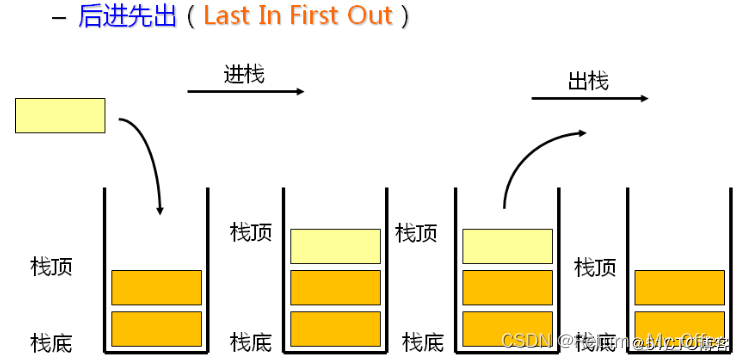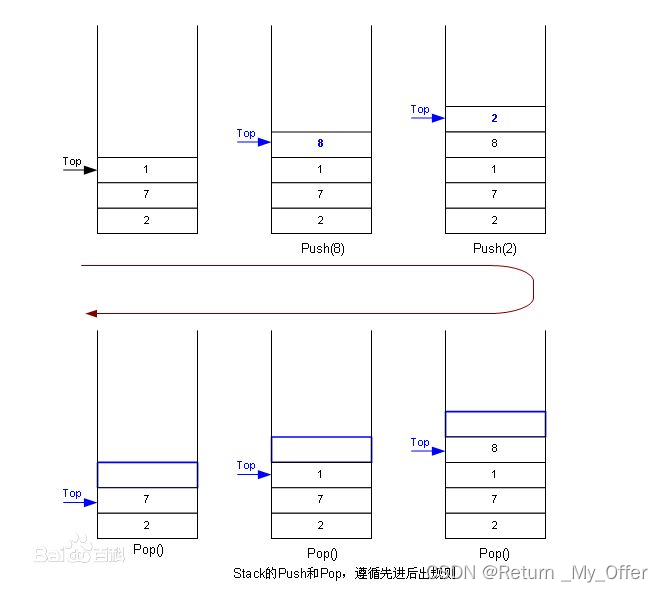已解决
【数据结构】:栈的实现
来自网友在路上 192892提问 提问时间:2023-10-14 04:34:10阅读次数: 92
最佳答案 问答题库928位专家为你答疑解惑

1 栈
1.1栈的概念及结构
栈:一种特殊的线性表,其只允许在固定的一端进行插入和删除元素操作。进行数据插入和删除操作的一端称为栈顶,另一端称为栈底。栈中的数据元素遵守后进先出LIFO(Last In First Out)的原则
压栈:栈的插入操作叫做进栈/压栈/入栈,入数据在栈顶
出栈:栈的删除操作叫做出栈。出数据也在栈顶


1.2栈的实现
栈的实现一般可以使用数组或者链表实现,相对而言数组的结构实现更优一些。因为数组在尾上插入数据的
代价比较小


全部代码如下 特别注意 栈的特征是后进先出
#include"Stack.h"
void STInit(ST* ps)
{assert(ps);ps->a = NULL;ps->capacity = 0;ps->top = 0;
}
void STDestroy(ST* ps)
{assert(ps);free(ps->a);ps->a = NULL;ps->top = 0;ps->capacity = 0;
}
void STPush(ST* ps, SLDataType x)
{assert(ps);if (ps->top == ps->capacity){int NewCapacity = ps->capacity == 0 ? 4 : ps->capacity * 2;SLDataType* tmp = (SLDataType*)realloc(ps->a, sizeof(SLDataType) * NewCapacity);if (tmp == NULL){perror("realloc fail");exit(-1);}ps->a = tmp;ps->capacity = NewCapacity;}
}
void STPop(ST* ps)
{assert(ps);assert(ps->top > 0);ps->top--;
}
int STSize(ST* ps)
{assert(ps);return ps->top;
}
bool STEmpty(ST* ps)
{assert(ps);return ps->top == NULL;
}
#pragma once
#include<stdio.h>
#include<assert.h>
#include<stdlib.h>
#include<stdbool.h>
//#define N 10
typedef int SLDataType;
typedef struct Stack
{SLDataType* a;int top;int capacity;
}ST;
void STInit(ST* ps);
void STDestroy(ST* ps);
void SLPush(ST* ps, SLDataType x);
void STPop(ST* ps);
int STSize(ST* ps);
bool STEmpty(ST* ps);
查看全文
99%的人还看了
猜你感兴趣
版权申明
本文"【数据结构】:栈的实现":http://eshow365.cn/6-19382-0.html 内容来自互联网,请自行判断内容的正确性。如有侵权请联系我们,立即删除!